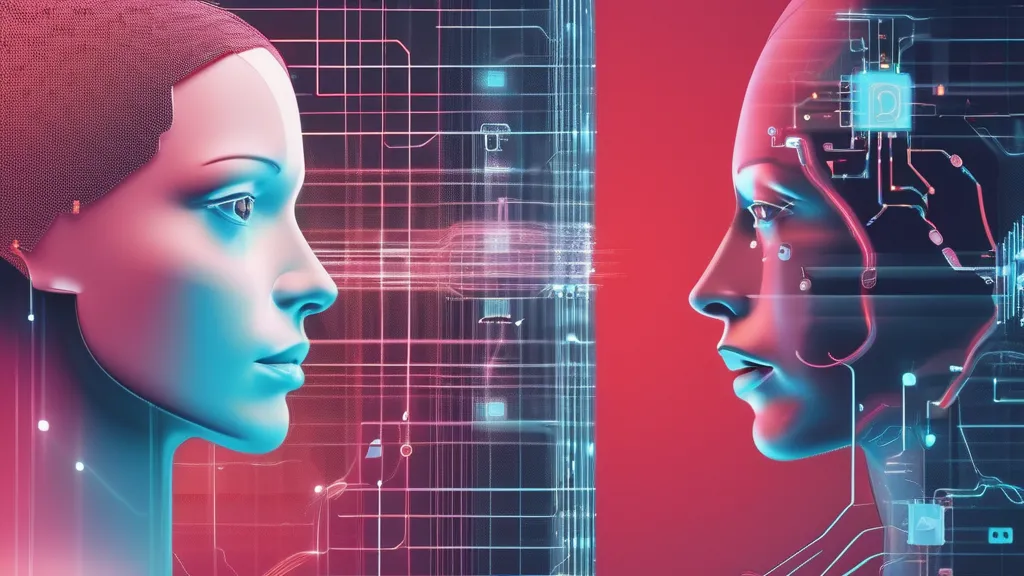AI and the Unscalable: Navigating the Tensions Between Technology and Human Values
Exploring the Tensions Between Scalable Technology and Irreplaceable Human Capacities

- AI thrives on scalability, but human values often resist this logic.
- Historical figures offer insights into balancing technology and human needs.
- Design AI systems that enhance, not replace, human judgment.
- Preserve essential human capacities in the face of AI advancements.
Introduction: The Scaling Logic of AI
In the race to leverage artificial intelligence (AI) for economic gain, the allure of scalability stands out as a powerful motivator. Venture capital and research funding are inherently drawn to technologies that promise exponential returns, primarily through their ability to scale across millions of users at minimal additional costs. AI, with its proficiency in handling vast datasets, executing repetitive tasks without fatigue, and operating continuously on a global scale, fits this economic blueprint seamlessly.
However, this focus on scalability often overlooks critical facets of human life that inherently resist such scaling logic. Trust, moral reasoning, and empathetic care are quintessentially human attributes that do not simply expand with more computing power but instead emerge through nuanced, contextual interactions. As we push AI development forward, acknowledging these limitations becomes essential.
The Limits of Scalability in Human Contexts
AI’s prowess in scalability is evident in various domains. In healthcare, for example, AI can efficiently analyze millions of medical images, aiding in diagnostic processes. Yet, it struggles to comprehend the unique circumstances of individual patients or make judgments that require moral reasoning. Similarly, in community safety, while algorithms can identify statistical patterns, they cannot replace policing that relies on personal relationships and contextual understanding. The education sector further highlights this divide, as AI can deliver personalized content at scale but cannot replicate the mentorship and moral guidance intrinsic to authentic teacher-student interactions.
These examples illustrate a broader issue: the implicit assumption in AI development that with sufficient data and computational power, we can eventually replicate those elements of human experience that are resistant to scaling. This assumption, often unexamined, drives tremendous investment and innovation. Yet, the real question may not be whether AI can become more capable, but rather whether certain human capacities are valuable precisely because they do not scale.
Historical Perspectives on Balancing Scale and Human Values
History provides models of thinkers who have successfully navigated the tensions between scalable processes and human values. Jane Addams, for instance, established settlement houses that expanded across America while emphasizing that social reform required direct human connection and interaction. E.F. Schumacher introduced economic frameworks that balanced efficiency with human values through the concept of “appropriate technology.” Amartya Sen redefined economics by integrating capabilities and human flourishing alongside traditional metrics like GDP. Wangari Maathai’s Green Belt Movement combined scalable reforestation efforts with community empowerment, illustrating that environmental solutions also required nurturing non-scalable human connections.
These pioneers offer valuable insights for current AI development. They remind us that while scalable systems have their place, they must be balanced with an appreciation for the irreplaceable value of what does not scale.
Designing AI with Human Limitations in Mind
Moving forward, we need an explicit framework that recognizes both the power of scalable systems and the unique value of human qualities that resist scaling. This involves several key actions:
Acknowledging Limitations: Recognize the inherent limitations of AI in domains requiring distinctly human qualities, such as empathy and moral reasoning.
Enhancing Human Judgment: Develop technologies that complement rather than replace human judgment, ensuring that AI tools serve to enhance human decision-making processes.
Protecting Human Spaces: Implement governance structures that protect spaces for human connection, even when algorithms offer more efficient alternatives.
Redefining Success Metrics: Measure success not solely by scale and efficiency but by how well technologies preserve and enhance the core elements that give meaning to human experience.
The Risk of Over-Scalability
Perhaps the greatest risk we face is not that AI will become too powerful, but that in our pursuit of scalability, we might inadvertently sacrifice what does not scale. The next wave of AI innovations will likely force a critical conversation about the boundaries between what can be algorithmically scaled and what requires inherently human capacities.
Conclusion: Choosing What to Preserve
Our technological future hinges not just on what we can build with AI, but on what we choose to preserve from our human heritage. As AI systems increasingly reach the limits of what can be scaled, we must consciously decide which human values we deem essential and irreplaceable. This decision will shape not only our technological landscape but also the essence of the human experience in an AI-driven world.
Engaging in this dialogue is crucial. It requires cross-disciplinary collaboration and a willingness to challenge the prevailing narratives of scalability. Only by doing so can we ensure that AI development aligns with the values and needs of human societies.
Call to Action
As we stand on the cusp of further AI advancements, what human capacities do you believe are essential to preserve? How can we integrate these values into the design and governance of AI systems? Join the conversation and help shape a future where technology and humanity coexist harmoniously.